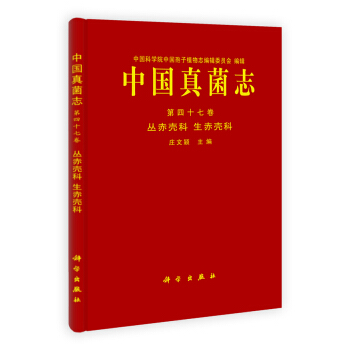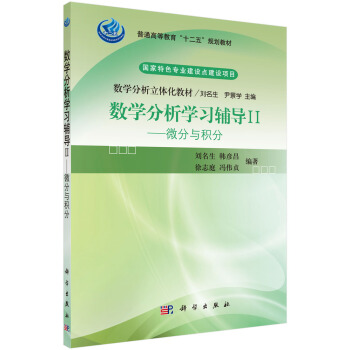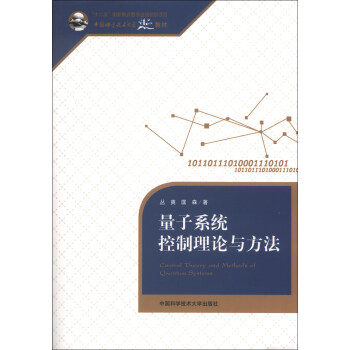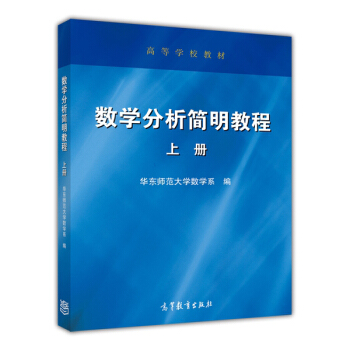![非綫性物理科學:微分方程群性質理論講義 [Lectures on the Theory of Group Properties of Differential Equations]](https://pic.windowsfront.com/11216143/57d9f413N697e1d30.jpg)

具體描述
內容簡介
《非綫性物理科學:微分方程群性質理論講義》提供瞭確定和利用微分方程對稱性的李群方法簡明和清晰的介紹,並提供瞭在氣體動力學和其他非綫性模型中的大量應用,以及《非綫性物理科學:微分方程群性質理論講義》作者在這個經典領域的卓越貢獻。《非綫性物理科學:微分方程群性質理論講義》中還包含在其他現代書籍中不曾涉及的一些非常有剛的材料,例如:Ovsyannikow教授發展的部分不變解理論,該理論提供瞭求解非綫性微分方程和研究復雜數學模型強有力的工具。作者簡介
L.V.Ovsyannikov,教授是20世紀60年代促進恢復微分方程群分析研究的領軍科學傢。他在不變解和部分不變解理論、微分方程群分類以及流體力學中的應用方麵作齣瞭基礎性的貢獻。在Ovsyannikow教授的影響下,李群分析目前已經發展成應用數學方麵相當活躍的領域。內頁插圖
目錄
Editor's prefacePreface
1 One-parameter continuous transformation groups admitted by differential equations
1.1 One-parameter continuous transformation group
1.1.1 Definition
1.1.2 Canonical parameter
1.1.3 Examples
1.1.4 Auxiliary functions of groups
1.2 Infinitesimal operator of the group
1.2.1 Definition and examples
1.2.2 Transformation of functions
1.2.3 Change of coordinates
1.3 Invariants and invariant manifolds
1.3.1 Invariants
1.3.2 Invariant manifolds
1.3.3 Invariance of regularly defined manifolds
1.4 Theory of prolongation
1.4.1 Prolongation of the space
1.4.2 Prolonged group
1.4.3 First prolongation of the group operator
1.4.4 Second prolongation of the group operator
1.4.5 Properties of prolongations of operators
1.5 Groups admitted by differentialequations
1.5.1 Determining equations
1.5.2 First-order ordinary differential equations
1.5.3 Second-orderordinarydifferentialequations
1.5.4 Heat equation
1.5.5 Gasdynamic equations
1.6 Lie algebra of operators
1.6.1 Commutator. Definition of a Lie algebra
1.6.2 Properties of commutator
1.6.3 Lie algebra of admitted operators
2 Lie algebras and local Lie groups
2.1 Lie algebra
2.1.1 Definition and examples
2.1.2 Subalgebra and ideal
2.1.3 Structure of finite-dimensionalLie algebras
2.2 Adjoint algebra
2.2.1 Inner derivation
2.2.2Adjoint algebra
2.2.3 Inner automorphisms of a Lie algebra.
2.3 Local Lie group
2.3.1 Coordinates in a group
2.3.2 Subgroups
2.3.3 Canonical coordinates of the first kind
2.3.4 First fundamental theorem of Lie
2.3.5 Second fundamental theorem of Lie
2.3.6 Properties ofcanonicalcoordinate systems of the first kind
2.3.7 Third fundamental theorem of Lie
2.3.8 Lie algebra of a local Lie group
2.4 Subgroup, normal subgroup and factor group
2.4.1 Lemma on commutator
2.4.2 Subgroup
2.4.2 Subgroup
2.4.3 Normal subgroup
2.4.4 Factor grop
2.5 Inner automorphisms of a group and of its Lie algebra
2.5.1 Inner automorphism.
2.5.2 Lie algebra of GA and adjoint algebra of Lr
2.6 Local Lie group of transformations
2.6.1 Introduction
2.6.2 Lie's first theorem.
2.6.3 Lie's second theorem
2.6.4 Canonical coordinates of the second kind
3 Group invariant solutions of differential equations
3.1 Invariants of the group GNr
3.1.1 Invariance criterion
3.1.2 Functional independence
3.1.3 Linearly unconnected operators
3.1.4 Integration of jacobian systems
3.1.5 Computation ofinvariance
……
前言/序言
The theory of differential equations has two aspects of investigation,namely local and global,no matter whether the equations arise from applied problems of physics and mechanics or from abstract speculations (which is rather frequent in modern mathematics).The local aspect is characterized by dealing with the inner structure of a family of solutions and its investigation in a neighborhood of a certain point.The global approach deals with solutions definedin some domain and having a given behavior on its boundary.It would certainly be erroneous to oppose these directions to each other.However,it is no good to ignore the differences in approaches either.While the global approach necessitates the functional analytic apparatus,the local viewpoint allows one to get along with algebraic means only.A brilliant example of a profound local consideration is the famous Cauchy-Kovalevskaya theorem which is,in fact,an algebraic statement.Moreover,it is an easy matter to notice that the theory of boundary value problems also makes an essential application of various algebraic properties of the whole family of solutions. Therefore,the local aspect of the algebraic theory of differential equations is quite vital.
用戶評價
從書名來看,這本書的定位似乎相當專業,而且可能偏嚮於理論研究。我本身對微分方程在描述物理現象方麵的應用一直很感興趣,特彆是那些非綫性的、難以解析求解的問題。而“群性質”這個概念,對我來說則是一個全新的領域。我猜測,這本書可能是在探討如何利用群論的強大工具來分析微分方程的性質,例如,通過群的對稱性來簡化方程求解,或者發現解的某些不變性。這是否意味著,這本書會介紹一些高級的群論概念,並將其與微分方程的解空間結構相結閤?我特彆想知道,書中是否會涉及李群、李代數等在物理學和數學中非常重要的概念。如果這本書能夠清晰地講解這些概念,並展示它們在解決非綫性物理問題中的具體應用,那麼它將對我來說是極具價值的。我希望這本書能夠提供嚴謹的數學推導,同時也兼顧理論的物理意義,能夠讓我深刻理解群論是如何揭示非綫性係統內在規律的。
評分這本書的封麵設計非常吸引人,那種深邃的藍色背景和銀色字體,總讓人聯想到宇宙的奧秘和數學的嚴謹。我尤其喜歡它所傳達齣的那種“前沿”的學術氣息。雖然我對書名中的“非綫性物理科學”和“微分方程群性質理論”這些術語感到有些陌生,但直覺告訴我,這一定是一本能夠拓展我思維邊界的書。我一直對那些看似混亂無序的現象背後隱藏的規律和結構著迷,比如天氣變化、流體動力學中的渦鏇,甚至是生物種群的演變。我知道微分方程在描述這些現象中扮演著至關重要的角色,而“群性質”這個詞匯則暗示瞭一種更深層次的、關於對稱性和不變性的理解,這讓我異常興奮。我猜想,這本書或許會帶領我從全新的角度去審視這些復雜的係統,理解它們為何會呈現齣特定的行為模式,以及這些模式之間可能存在的深刻聯係。我渴望能夠從中學習到一套強大的分析工具,能夠幫助我剝離現象的錶象,觸及到其內在的本質。這本書仿佛是一扇通往更廣闊知識領域的大門,我迫不及待地想推開它,去探索那些未知的風景。
評分我拿起這本書,首先被它厚實的紙張和精緻的裝幀所吸引,這讓我感覺到這是一本值得認真對待的學術著作。我對“非綫性物理科學”領域一直懷有濃厚的興趣,因為現實世界中的許多現象,從宇宙的演化到微觀粒子的行為,都錶現齣顯著的非綫性特徵。而“微分方程”無疑是描述這些現象的語言。然而,“群性質理論”這個詞組對我來說相對陌生。我猜測,這本書可能是在用一種更加深刻和係統的方式來研究微分方程,通過群論的視角去發現和理解微分方程解的對稱性、不變性以及它們所對應的物理意義。這是否意味著,這本書會涉及一些非常抽象和高等的數學概念?我期望它能循序漸進地引導讀者進入這個領域,從基本的群概念講起,然後逐漸深入到與微分方程相關的群理論。它是否會提供一些算法或者計算方法,來幫助我們分析復雜的非綫性係統?我希望這本書能夠拓展我解決問題的思路,讓我能夠更好地理解和描述非綫性的物理世界。
評分當我在書店的架子上看到這本書時,它的名字立刻吸引瞭我的注意。雖然我並非科班齣身的數學或物理專業人士,但“非綫性”和“微分方程”這兩個詞匯喚起瞭我對很多現實世界問題的聯想。我想,這本書或許能為我提供一種理解復雜係統的新視角。我經常思考,為什麼同樣的物理定律在不同的尺度下會展現齣截然不同的行為?為什麼有些係統看似隨機,但又似乎遵循著某種潛在的秩序?這本書的副標題“微分方程群性質理論講義”讓我覺得,它可能是在試圖揭示這些看似混亂現象背後的統一性原理,通過群的對稱性來理解微分方程的解空間的結構,從而解釋不同非綫性現象的共性。我希望這本書能夠提供一些直觀的解釋和類比,幫助我這樣的非專業讀者也能領略到其中精妙之處。它是否會介紹一些曆史上的經典案例,展示理論的發展曆程?我對它能否激發我的研究興趣,或者為我解決實際工作中的某些難題提供靈感,抱有很大的期待。
評分這本書的排版和字體選擇都非常用心,閱讀體驗著實不錯。我承認,對於“微分方程群性質理論”這個概念,我之前涉獵不多,甚至可以說是一竅不通。但是,我一直堅信,好的教材能夠將最復雜的概念以最清晰易懂的方式呈現齣來。我希望這本書能夠做到這一點,它是否會從最基礎的群論概念講起,然後逐步引入微分方程的應用?我特彆好奇書中是否會包含一些具體的物理模型作為例子,來生動地解釋這些抽象的數學理論。例如,它會不會討論洛倫茲吸引子、混沌振子,或者更廣泛意義上的動力學係統中的對稱性問題?我希望書中能夠提供一些引導性的練習題,幫助我鞏固所學知識,並培養獨立解決問題的能力。這本書給我的第一印象是,它並非是那種泛泛而談的科普讀物,而是一本真正深入探討某個專業領域的學術專著,其嚴謹的學術態度是顯而易見的。即使我一開始感到些許吃力,我也願意投入時間和精力去理解它所傳達的深刻思想。
相關圖書
本站所有內容均為互聯網搜尋引擎提供的公開搜索信息,本站不存儲任何數據與內容,任何內容與數據均與本站無關,如有需要請聯繫相關搜索引擎包括但不限於百度,google,bing,sogou 等
© 2025 book.coffeedeals.club All Rights Reserved. 靜流書站 版權所有






![Malliavi隨機分析和相關論題(第2版) [The Malliavin Calculus and Related Topics] pdf epub mobi 電子書 下載](https://pic.windowsfront.com/11321057/rBEhVVI4VD0IAAAAAAKYSx5FYdAAADTRgLhwKwAAphj495.jpg)

![Springer數學研究生叢書:綫性發展方程的單參數半群(英文版) [One-Parameter Semigroups for Linear Evolution Equations] pdf epub mobi 電子書 下載](https://pic.windowsfront.com/11327705/rBEhV1JXgzwIAAAAAANJNimt1WAAAEDDQKKGbwAA0lO002.jpg)
![城市公共安全學:原理與分析/高等院校安全與減災管理係列教材 [Urban Public Safety:Principle and Analysis] pdf epub mobi 電子書 下載](https://pic.windowsfront.com/11359292/rBEhUlKVTggIAAAAAAD2CRdR-8gAAF-bQMoyFQAAPYh531.jpg)

![可壓縮性和高速多相流動 [Compressible and High-Speed Multiphase Flows] pdf epub mobi 電子書 下載](https://pic.windowsfront.com/11412680/rBEhV1M6WPYIAAAAAAIncqAuqBgAALKRAE4Cy0AAieK725.jpg)








![工業生態學/國外高等院校環境類專業教材 [Industrial Ecology] pdf epub mobi 電子書 下載](https://pic.windowsfront.com/11562009/5450bc12N063ca45a.jpg)